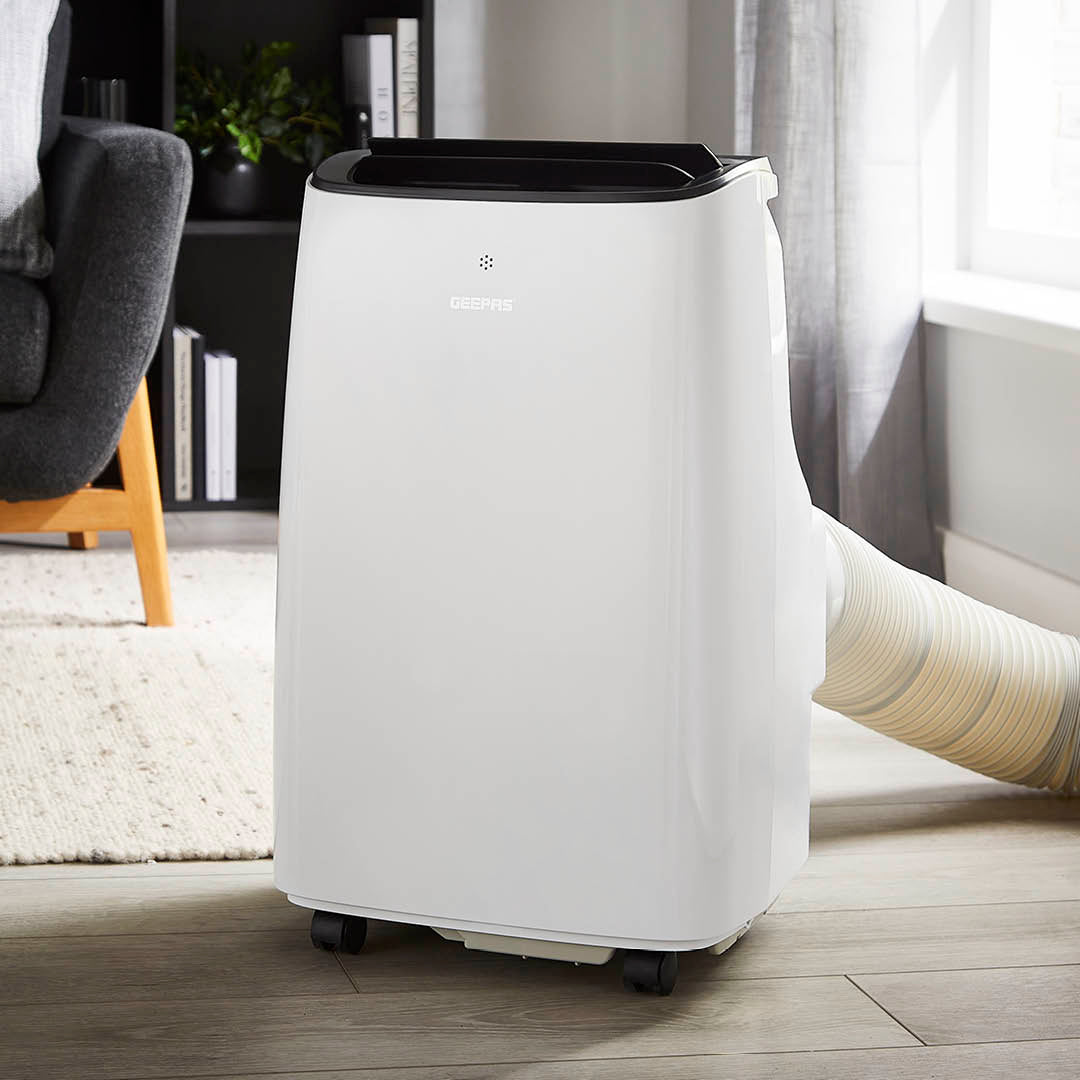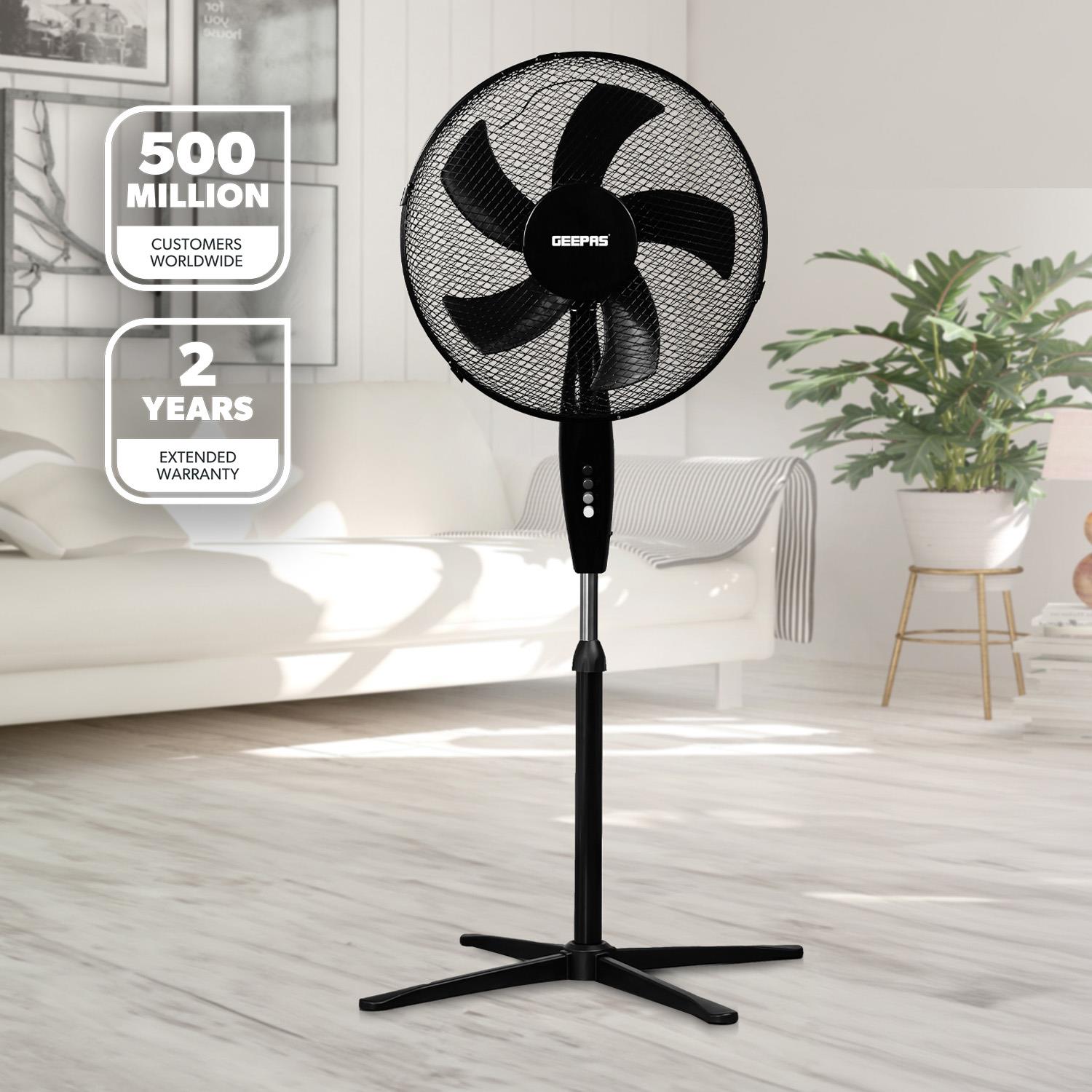As UK summers continue to break temperature records, more households are turning to portable air conditioners for relief. While these mobile cooling units offer welcome respite from the heat, many British consumers worry about their impact on energy bills, especially with the UK's rising electricity costs.
Shop The Geepas Portable Air Conditioning Collection
This comprehensive guide examines portable air conditioner energy consumption, efficiency ratings, and practical tips to minimise running costs while keeping your home comfortable during heat waves.
Understanding Portable Air Conditioner Energy Usage
Power consumption basics:
Portable air conditioners in the UK market typically consume between 700 and 2500 watts of electricity, with most domestic models averaging around 1000-1200 watts. This power consumption is significantly higher than alternatives like pedestal fans (40- 100W) or tower fans (25- 60W), but lower than central air conditioning systems.
To calculate your portable air conditioner's energy usage:
kWh = (wattage x hours of use) / 1000
For example, a 1200W portable air conditioning unit running for 6 hours consumes 7.2 kWh of electricity daily.
British Thermal Units (BTUs) and Efficiency
In the UK market, portable air conditioners are rated by their cooling capacity in British Thermal Units (BTUs). Common household models range from 5,000 to 14,000 BTUs, with higher BTU ratings indicating cooling power and typically higher energy consumption.
When shopping for an energy-efficient portable air conditioner, look for:
- Energy Efficiency Class: The UK's energy label system rates appliances from A+++ (most efficient) to G (least efficient).
- Energy Efficiency Ratio (EER): Higher numbers indicate more efficient portable air conditioning units.
- Seasonal Energy Efficiency Ratio (SEER): Particularly relevant for the variable UK climate.
Comparing Energy Costs Of Portable Air Conditioners In The UK
Daily Running Costs
With the average UK electricity rate at approximately 27p per kWh (as of early 2023), here's how different portable air conditioners might affect your energy bills:
(These are calculated based on 6 hours of usage daily)
900W - £1.46 a day
1200W - £1.94 a day
1500W - 2.43 a day
Note: Costs calculated based on average UK electricity rates; actual prices may vary by supplier and region.
Comparing Portable Air Conditioners To Other Cooling Methods
For cost-conscious UK households, understanding how portable air conditioners compare to other cooling options is essential:
Portable Air Conditioners - 32p per hour
Window Air Conditioners - 24p per hour
Pedestal Fans - 1.6p per hour
Tower Fans - 1.1p per hour
Ceiling Fans - 0.8p per hour
This comparison illustrates why many UK households reserve portable air conditioning use for the hottest days, relying on more economical fans for moderate temperatures.
Energy-Efficient Features To Look For In Portable Air Conditioners
When shopping for energy-efficient portable air conditioners, prioritise these features to minimise electricity consumption:
Programmable Timers and Smart Controls
Modern portable air conditioners often include:
- 24-hour programmable timers: Set your unit to run only when needed.
- Smart Wi-Fi connectivity: Control your portable AC remotely via smartphone apps.
- Temperature sensors: Prevent unnecessary operation when the desired temperature is reached.
- Sleep modes: Gradually increase temperature overnight to save energy.
Multiple Operating Modes
Energy-efficient portable air conditioners typically offer several operating modes:
- Cooling mode: Traditional air conditioning function.
- Fan-Only mode: Uses minimal energy while providing air circulation.
- Dehumidifier mode: Particularly useful in humid summers, often using less energy than full cooling.
- Eco mode: Optimises energy usage by cycling the compressor.
Inverter Technology In Premium Models
While less common in portable units than in fixed systems, some premium portable air conditioners feature inverter technology, which:
- Adjusts compressor speed based on demand rather than cycling on/off.
- Can reduce energy consumption by 30-50% compared to non-inverter models.
- Maintains more consistent temperatures with less energy waste.
Practical Tips To Reduce Portable Air Conditioner Energy Usage
Proper Sizing:
- For a standard bedroom (3m x 3m) - 5,000 - 7,000 BTU.
- For a medium living room (4m x 4m) - 8,000 - 10,000 BTU.
- For larger open-plan spaces - 12,000 - 14,000 BTU.
Oversized units waste energy through short cycling, while undersized units strain to cool effectively.
Optimising The Placement Of Your Portable Air Conditioner
The unique architecture of many British homes requires thoughtful placement:
- Window ventilation: Ensure proper exhaust hose placement through windows, using appropriate window sealing kits.
- Heat sources: Position away from direct sunlight and heat-generating appliances.
- Airflow optimisation: Central locations provide better circulation throughout the room.
- Multi-story considerations: Remember that heat rises.
Complementary Energy-Saving Strategies
Combine your portable air conditioner with these energy-saving measures:
- Blackout Curtains: Block intense sunlight during long summer days.
- Window Treatment: Many UK homes have single-glazed windows that benefit from temporary insulation.
- Ceiling & Pedestal fans: Circulate cooled air more efficiently.
- Night Cooling: Take advantage of cooler evening temperatures by opening windows instead of running your portable AC.
Conclusion
As the temperatures continue to rise, portable air conditioners represent a flexible cooling solution - albeit one with notable energy implications.
By understanding their true energy consumption, selecting appropriate models for your space, and implementing energy-saving practices, you can maintain comfort during heat waves while managing electricity costs.
Remember that for most UK households, a portable air conditioner represents occasional-use equipment rather than a daily necessity. With thorough usage patterns and complementary cooling strategies, you can balance comfort and energy efficiency even during the hottest days.




